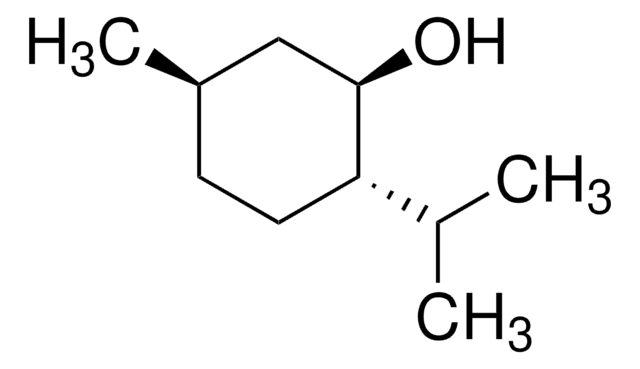W324507
Undecanoic acid
≥99%, FG
Synonym(s):
Hendecanoic acid
About This Item
Recommended Products
biological source
synthetic
Quality Level
grade
FG
Fragrance grade
Agency
follows IFRA guidelines
reg. compliance
EU Regulation 1223/2009
EU Regulation 1334/2008 & 178/2002
FDA
Assay
≥99%
bp
228 °C/160 mmHg (lit.)
248-250 °C (lit.)
mp
28-31 °C (lit.)
application(s)
flavors and fragrances
Documentation
see Safety & Documentation for available documents
food allergen
no known allergens
fragrance allergen
no known allergens
Organoleptic
creamy; waxy
SMILES string
CCCCCCCCCCC(O)=O
InChI
1S/C11H22O2/c1-2-3-4-5-6-7-8-9-10-11(12)13/h2-10H2,1H3,(H,12,13)
InChI key
ZDPHROOEEOARMN-UHFFFAOYSA-N
Looking for similar products? Visit Product Comparison Guide
Related Categories
General description
Application
- Undecanoic Acid and L-Phenylalanine in Vermiculite: Detection, Characterization, and UV Degradation Studies for Biosignature Identification on Mars.: This research focuses on the detection and characterization of undecanoic acid and L-phenylalanine in vermiculite, with potential applications for biosignature identification on Mars. The study also examines UV degradation, which is crucial for astrobiological research (McIntosh et al., 2024).
- Drugs Form Ternary Complexes with Human Liver Fatty Acid Binding Protein 1 (FABP1) and FABP1 Binding Alters Drug Metabolism.: This paper explores how drugs interact with human liver fatty acid binding protein 1 (FABP1), including the involvement of undecanoic acid, to form ternary complexes that influence drug metabolism. These findings have significant implications for pharmacology and drug development (Yabut et al., 2024).
- Enhancing antifungal and biocompatible efficacy of undecanoic acid through incorporation with chitosan-based nanoemulsion.: This study demonstrates the enhanced antifungal and biocompatible properties of undecanoic acid when incorporated into a chitosan-based nanoemulsion, highlighting potential biomedical applications for this compound (Sathiyaseelan et al., 2024).
- In Vitro Evaluation of Essential Oils and Saturated Fatty Acids for Repellency against the Old-World Sand Fly, Phlebotomus papatasi (Scopoli) (Diptera: Psychodidae).: This research evaluates the repellency of essential oils and saturated fatty acids, including undecanoic acid, against the Old-World sand fly. The findings provide insights into developing natural repellents for vector control (Temeyer et al., 2024).
Storage Class Code
11 - Combustible Solids
WGK
WGK 1
Flash Point(F)
>233.6 °F
Flash Point(C)
> 112 °C
Personal Protective Equipment
Choose from one of the most recent versions:
Already Own This Product?
Find documentation for the products that you have recently purchased in the Document Library.
Customers Also Viewed
Our team of scientists has experience in all areas of research including Life Science, Material Science, Chemical Synthesis, Chromatography, Analytical and many others.
Contact Technical Service








